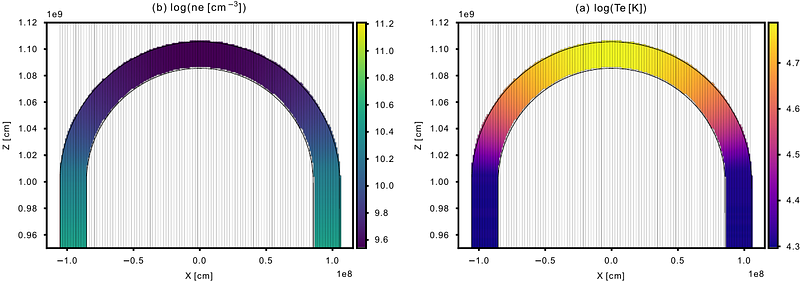The nature of small scale EUV solar brightenings investigated as impulsive heating of short loop in 1D hydrododynamics simulations

The nature of small scale EUV solar brightenings investigated as impulsive heating of short loop in 1D hydrododynamics simulations
A. Dolliou, J. A. Klimchuk, S. Parenti, K. Bocchialini
AbstractSmall (400 to 4000 km) and short lived (10 to 200 km) extreme ultraviolet (EUV) brightenings, detected by the High Resolution Imager EUV (HRIEUV), have been found to be ubiquitous in the Quiet Sun (QS). Their contribution to coronal heating as well as their physical origin are currently being investigated. We wish to determine whether models of short loops and impulsive heating are compatible with the results from observations. In particular, we used two models of loops with distinct thermal properties: cool (T below 1E5 K) and hot loops (T above 1E5 K). We simulated the evolution of impulsively heated short loops, using the 1D hydrodynamics (HD) code HYDRAD. We computed the synthetic light curves of HRIEUV, four EUV channels of the Atmospheric Imaging Assembly (AIA), and five emission lines measured by the SPectral Imaging of the Coronal Environment (SPICE). We then compared the results from the synthetic light curves with observations. The aim was to reproduce the short delays observed between the intensity peaks of the light curves. Cool loops subjected to impulsive heating are good candidates to explain the physical origin of the EUV brightenings. On the other hand, hot loops are not consistent with observations, except when they are subjected to especially strong impulsive heating.